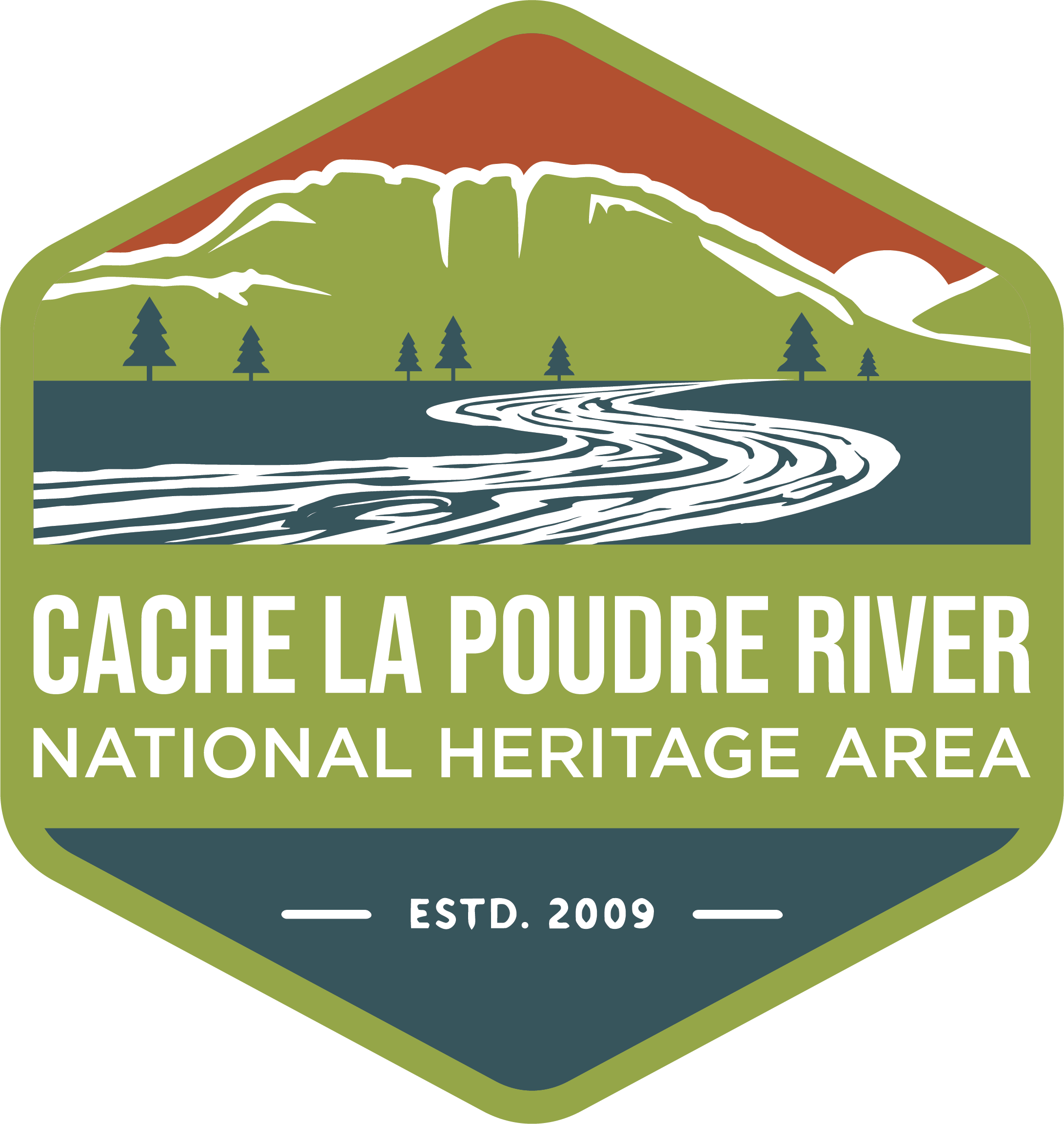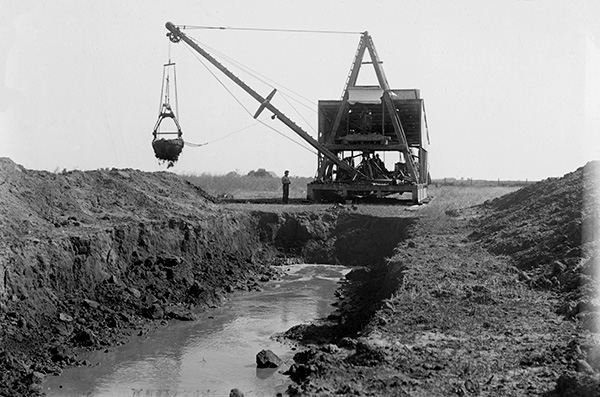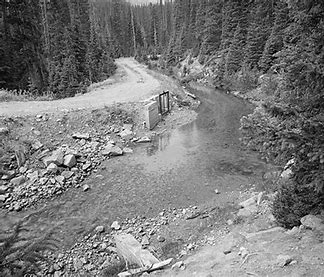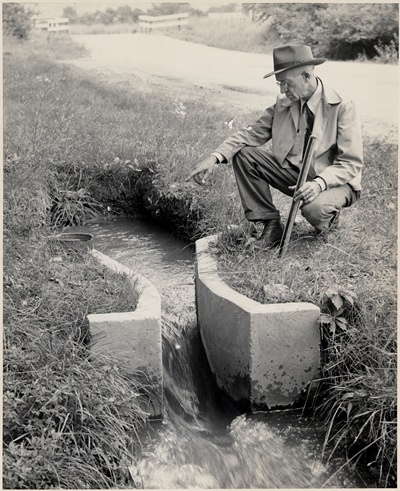Even the best ditch could only deliver water if the river had flow. The Poudre surged with springtime snowmelt for a few months, only to have insufficient flows later in the season. Northern Coloradoans needed to store the abundant spring flow; reservoirs provided a solution.
As the snow melted, these artificial lakes held the water. They allowed junior water suitable holders to release water from their reservoirs to senior water suitable holders in exchange for the junior water holders being able to divert a like amount of water from the Poudre.
In 1875, Fort Collins’ Warren Lake became the Poudre Valley’s first irrigation reservoir. Steady reservoir expansion continued into the twentieth century.
Moving Water Across Mountains
While irrigators built more and larger reservoirs, they still depended on the Poudre River to fill them. A dry year on the Poudre meant reservoirs and ditches ran low, and locals searched for new water sources. The Poudre’s headwaters lie relatively close to those of other river basins. Investors saw potential; with high-elevation ditch-digging directing, snowmelt into the Poudre River.
The best-known trans-mountain diversion is the Grand River Ditch, which started in 1890 and was completed in 1936. While irrigators built more and larger reservoirs, they still depended on the Poudre River to fill their lakes.
Measuring Stream Flow
Farmers could tap into reliable information at Colorado Agricultural College (CAC) in Fort Collins. Founded in 1870 and now known as Colorado State University, the land-grant college researched and disseminated hydrologic information to rural people.
State experts made a significant contribution to the accurate measurement of river flow. The first State Engineer, in 1881, installed a staff gauge at the mouth of the Poudre Canyon and took measurements of the flows that he provided to water commissioners. In 1883 E.S. Nettleton, the second State Engineer, installed a permanent gauging station with a serial self-recording device.
One of CAC’s first civil and irrigation engineering students, Ralph Parshall, returned in 1907 as a professor. Later employed by the U. S. Department of Agriculture, working in partnership with the college and using the college’s hydraulics laboratory, he developed the measuring flume that bears his name. The Parshall Flume was precise, inexpensive, and easy to use and remains one of the world’s most popular water-measuring devices.
The momentum of technical water studies carried into the non-academic world as well. B.S. La Grange, the first water commissioner on the Poudre, theorized that irrigation water soaks into the ground, eventually flowing back into the river. His experiments were the first “return flow” measurements in the United States.
By 1900, a new crop appeared and reshaped northern Colorado. Initially, farmers were reluctant to grow sugar beet seeds. Still, the potential was tempting, as experts touted the beets thriving on long hours of sunlight, low humidity, steady amounts of moisture, and good soil, all available in northern Colorado.
The sugar beets flourished. Between 1901 and 1906, sugar factories sprang up in Fort Collins, Greeley, Windsor, and Eaton. These factories used water to convert beets into commercial sugar. Colorado was the largest sugar beet producer in the country.






